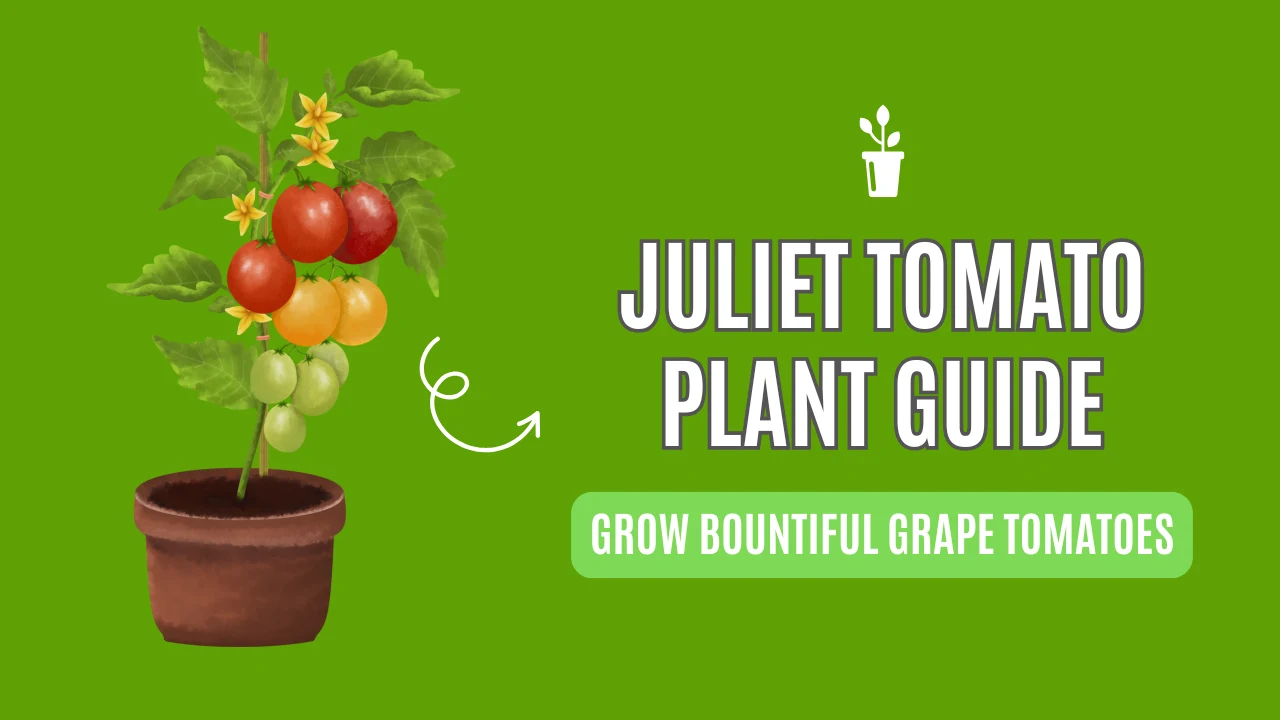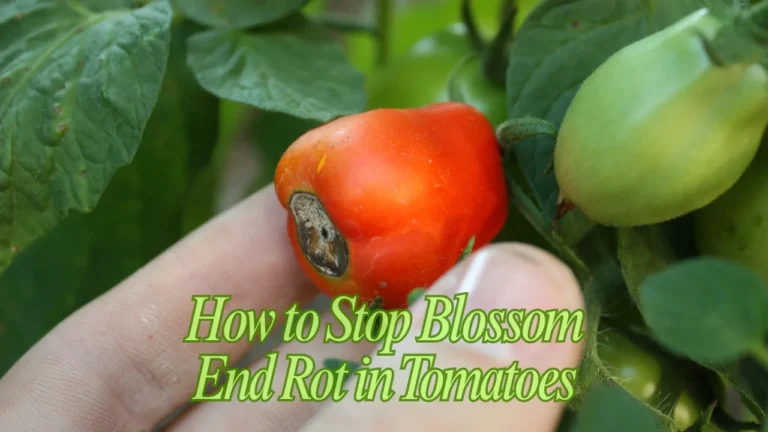Imagine reaching into your garden and pulling a cluster of sweet, grape-like Juliet tomatoes right off the vine.
Juliet is a vigorous F₁ hybrid tomato (an All-America Selections winner) that produces abundant clusters of 6–18 oblong fruits, each about 1–2 ounces.
The plants are indeterminate and grow into 4–5-foot vines, so give each one plenty of room (about 2–3 feet) and sturdy support.
Juliets are prized for their flavor and toughness: the deep-red fruits are sweet and well-balanced, and the variety is noted for its disease and crack resistance.
In fact, one gardener marveled that Juliet is “bullet-proof” – “if I could only grow one tomato, it would be Juliet”.
Planting and Growing Juliet Tomatoes
To get a head start, sow Juliet seeds indoors about 6–8 weeks before your last expected frost. Use a good seed-starting mix, keep it warm (around 75–80°F), and thin seedlings to the strongest plant per pot.
After the danger of frost has passed, transplant seedlings outdoors or sow seeds directly. Plant in full sun (at least 6–8 hours of direct light) in well-drained, organic-rich soil.
Space plants roughly 24–36 inches apart, so their sprawling vines have room. Because Juliet vines can reach about 5 feet tall, set up a sturdy cage or stake at planting time.
- Soil & Sun: Choose a sunny spot. Soil pH around 6.0–6.8 and rich in compost works best. Amend poor soil with compost or aged manure.
- Watering: Keep soil evenly moist, but not waterlogged. Deep-soak plants 1–2 times per week (more often in containers or hot weather), rather than shallow daily watering. Mulching helps retain moisture and keeps weeds down.
- Fertilizer: Feed with a balanced vegetable fertilizer or tomato fertilizer every 2–4 weeks during the growing season. Tomatoes are heavy feeders, especially when fruiting, so a little extra potassium and phosphorus at bloom time can boost yield.
Prune Juliet plants sparingly: remove any leaves touching the ground and pinch off suckers (small shoots in the leaf axils) to improve air flow and focus energy on fruit.
Do pruning on dry plants (early morning is best) to avoid spreading disease. Cut off any yellow or diseased foliage immediately.
Always keep plants well-supported as they grow – one Juliet vine can produce dozens of tomatoes in a season. In my own garden, a single well-cared-for Juliet plant easily yielded several quarts of tomatoes by late summer.
Common Pests and Diseases
Juliet tomatoes are tough and disease-resistant, but no plant is invincible. They have built-in resistance to cracking and intermediate resistance to early and late blight, so issues like blossom-end rot and splitting are rare.
Still, watch for common tomato pests and problems: aphids, whiteflies and spider mites can suck sap; caterpillars like the tomato hornworm can strip foliage; and fungal diseases (blights, leaf spots) thrive in wet conditions.
Garden hygiene helps a lot. Juliet’s natural vigor and disease resistance make it “the best choice” for beginner gardeners, but experts still recommend regular inspections for pests and removing debris.
For example, check the undersides of leaves for aphids or eggs, and handpick any hornworms you find. Keep the area around plants clear of weeds and fallen leaves, and water at the base of the plant (wet foliage encourages mold).
Companion plants (see below) also help repel insects. If you do spot trouble, organic controls like insecticidal soap or Bacillus thuringiensis (Bt) for caterpillars can be used safely on tomatoes.
Companion Planting for Healthy Tomatoes
Planting the right companions can boost Juliet’s productivity and deter pests. Basil is a classic partner – it not only tastes great alongside tomatoes, but its aroma helps repel flies, mosquitoes and tomato pests.
Marigolds are another favorite: they attract pollinators and produce compounds (like pyrethrum) that repel tomato hornworm moths and, nematodes.
In fact, marigolds are scientifically proven to reduce root-knot nematode populations in the soil.
Other beneficial companions include calendula, zinnias or cosmos (daisy-family flowers that draw pollinators and predatory insects) and herbs like rosemary or dill (aromatic herbs can deter pests).
On the flip side, avoid planting tomatoes near potatoes, corn or brassicas (broccoli, cabbage, etc.), as these can attract similar pests or diseases. A simple way to phrase it: fill your space around Juliets with flowers and herbs you’d enjoy, and leave a bit of distance from other solanums. For example:
- Good companions: Basil, marigolds, nasturtiums, parsley, chives, garlic, calendula, dill, oregano.
- Avoid: Potatoes (late blight risk), corn (shared pests), fennel (inhibits growth).
Note: If you’re considering growing Juliet tomatoes in containers, choosing the correct container is crucial to avoid root restriction. You can check out The Right Pot Size to Grow Tomatoes Without Stunted Roots for a clear guide on container sizing.
Harvesting and Using Your Juliets
Juliet tomatoes typically ripen about 55–65 days after transplanting. You’ll know they’re ready when the fruits turn a deep red and feel firm (some gardeners pick at the “breaker” stage when fruits are half-red and half-green).
Gently twist or snip off clusters with the stem attached to avoid bruising. Small clusters can be harvested all at once; if fruits are larger, pick them individually as needed.
Once picked, use Juliets fresh or preserve them: they shine in salads, fresh salsas, and as a snack right off the vine. Their sweet, tangy flavor also makes excellent sauces and pastes.
One treat is to slice them in half, drizzle with olive oil and roast slowly – this concentrates the sweetness. They also dry beautifully (as sun-dried tomatoes or in a dehydrator) to add punch to soups and pasta.
As one gardener noted, even when oven-roasted or blended (skins and all) into sauces, Juliets retain intense flavor.
Storage: Ripe Juliets will keep 3–5 days at room temperature. If you need more time, refrigerate them after a day or two.
(Just dry the fruits first – moisture speeds spoilage in the fridge.) However, long refrigeration can dull their flavor, so it’s often best to eat or preserve them promptly.
By late summer and into fall, you’ll have a steady stream of glossy, oblong red tomatoes – more than enough for eating fresh and cooking. A handful or two of Juliets thrown into a salad or tossed with pasta adds bright color and sweet tomato punch. Because they hold their texture and sweetness even after cooking, many gardeners reserve some harvest to can or freeze for winter sauces.
“I still remember the first time I roasted a whole tray of Juliet tomatoes,” says one grower. “The kitchen filled with the aroma of sweet tomatoes, and the flavor was amazingly concentrated. We ended up mixing them into pasta, and it tasted like our own homemade ketchup!”
How This Guide Was Researched
To ensure accuracy, I drew on a variety of expert sources. For example, variety details (cluster size, disease resistance, etc.) came from seed catalogs and gardening blogs.
Care and planting instructions were cross-checked with horticultural sites (like ToGardener and Armstrong Garden Center).
Companion planting tips were taken from recent organic gardening articles. Every key point above is backed by citations to these sources, so you can be confident that the Juliet tomato advice here reflects current expert knowledge.
By following these guidelines and a bit of attentive care, you’ll soon be enjoying bountiful harvests of Juliet grape tomatoes. Happy gardening, and enjoy those sweet summer clusters!




Leave a Comment